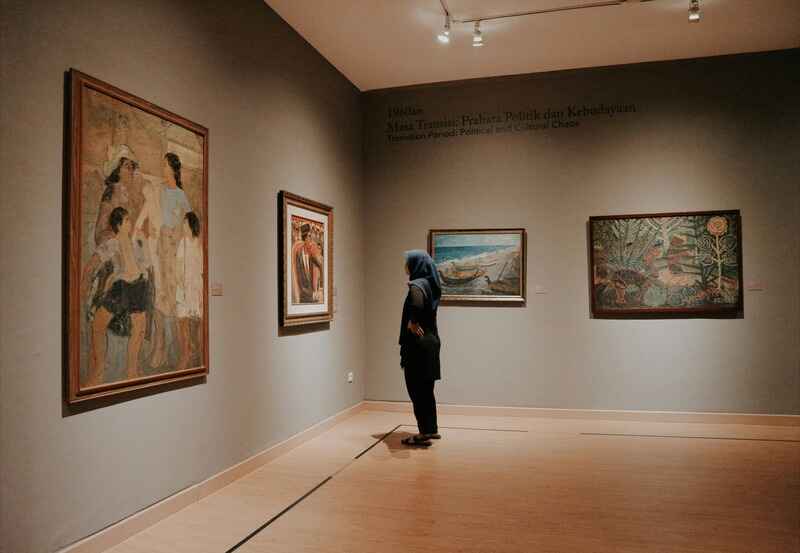The art industry has undergone significant changes over the years, driven by technological advances, shifting cultural preferences, and new economic models. For collectors, understanding these trends is essential for making informed decisions and building valuable collections. This article explores the evolution of the art industry, highlighting key trends and insights that every collector should know.
The Digital Transformation of the Art Industry
Technology has revolutionized the art industry in many ways. From online galleries to digital art, the landscape has expanded dramatically. Digital platforms now allow artists to showcase their work globally, reaching audiences beyond traditional gallery spaces. Collectors can view, buy, and even bid on art without leaving their homes.
One of the most significant developments is the rise of digital art and NFTs (non-fungible tokens). Digital art has gained legitimacy as a collectible asset, with some pieces selling for millions. NFTs provide a way to verify the ownership and authenticity of digital artworks, creating a new market for collectors. This transformation has made art more accessible and opened doors for emerging artists to reach wider audiences.
The Rise of Online Art Marketplaces
The growth of online art marketplaces has been a game-changer for the art industry. Websites like Artsy, Saatchi Art, and Artnet have created platforms where collectors can browse and purchase artworks from around the world. This has democratized the market, making it easier for new collectors to enter and explore.
Online marketplaces also offer transparency. Collectors can compare prices, view artist portfolios, and research trends. This has led to increased competition, pushing galleries and artists to adopt new strategies to stand out. For collectors, online platforms provide a convenient way to discover diverse artworks and track market trends.
Art Industry Trends: The Emergence of Digital Art and NFTs
Digital art and NFTs have become major trends in the art industry. These new forms of art have attracted both traditional collectors and tech-savvy investors. Digital art offers unique advantages, such as easy storage, transferability, and lower maintenance costs.
NFTs have given digital artists a way to monetize their work, with each NFT representing a unique, verifiable digital item. Collectors can now own digital art pieces that are authenticated on a blockchain, ensuring provenance and security. This has opened up new opportunities for investment, as digital art continues to grow in popularity and value.
Sustainability in the Art Industry
Sustainability has become a critical focus across many industries, including the art world. From eco-friendly materials to ethical sourcing, artists and galleries are increasingly conscious of their environmental impact. Many artists now create works that address environmental issues, using recycled materials or sustainable practices.
Collectors are also paying attention to sustainability. Purchasing from eco-conscious artists or galleries can enhance the social value of a collection. Additionally, the rise of digital art has contributed to sustainability by reducing the need for physical materials and transport. For the art industry, adopting sustainable practices is not only a trend but a necessity for the future.
The Role of Social Media in the Art Industry
Social media platforms like Instagram, TikTok, and Pinterest have become crucial tools for artists, galleries, and collectors. These platforms allow artists to share their creations directly with audiences, bypassing traditional gatekeepers like galleries and curators. This direct connection can lead to faster recognition and sales.
For collectors, social media provides a way to discover new artists and trends. Following artists and influencers can offer insights into emerging styles, movements, and popular themes. It also allows collectors to engage directly with artists, fostering a sense of community and supporting emerging talents. The art industry has become more interconnected, thanks to the influence of social media.
Art Industry Innovations: Virtual Reality and Augmented Reality
The art industry has embraced new technologies, including virtual reality (VR) and augmented reality (AR). These tools have enhanced how people experience and interact with art. VR allows users to tour virtual galleries or exhibitions from anywhere in the world. AR enables users to view how a piece would look in their space before buying it.
These technologies have become particularly valuable during times when physical gallery visits were limited. VR and AR have allowed galleries to reach a global audience, offering immersive experiences that traditional setups cannot provide. For collectors, these innovations provide new ways to engage with art and explore collections, making the buying process more interactive and enjoyable.
The Impact of Globalization on the Art Industry
Globalization has significantly influenced the art industry, making it more diverse and interconnected. Collectors now have access to artworks from different cultures, styles, and backgrounds. This has expanded the scope of art collections, promoting cultural exchange and collaboration.
The global art market has also grown, with major events like Art Basel, Frieze, and the Venice Biennale attracting international attention. These events highlight the diversity of the art world, showcasing artists from various regions and cultures. For collectors, globalization has created a wider range of investment opportunities and the chance to explore art that transcends borders.
Industry Challenges: Authenticity and Provenance
While the art industry has grown, it faces challenges, particularly concerning authenticity and provenance. With the rise of digital art and online sales, ensuring the authenticity of artworks has become more complex. For traditional artworks, provenance — the history of ownership — is crucial for establishing value.
Collectors must be diligent when purchasing art, verifying the authenticity of pieces and working with reputable galleries or dealers. Digital platforms have started to address these issues by providing blockchain-based solutions to track ownership and verify authenticity. Understanding provenance and authenticity is essential for collectors looking to make sound investments in the art industry.
The Importance of Art Investment and Market Trends
Art is increasingly recognized as an investment, with collectors looking for pieces that may appreciate over time. Understanding market trends is essential for those who wish to invest in art. Following trends, such as the popularity of certain movements, artists, or styles, can help collectors make informed decisions.
For example, the rising interest in contemporary and digital art has led to increased value for certain works. Collectors who keep an eye on these trends are better equipped to identify pieces that may grow in value. The art industry is dynamic, and staying informed about market trends can lead to profitable investments.
The Future of the Art Industry: What Collectors Should Expect
The art industry is poised for continued growth and evolution. As technology advances, new forms of art will emerge, creating more opportunities for collectors. Digital art, virtual galleries, and blockchain technologies are likely to play significant roles in the future market.
Collectors should expect more integration between physical and digital experiences, with hybrid exhibitions and digital twins of physical artworks. Sustainability will continue to be a focus, with more artists adopting eco-friendly practices. For collectors, the key is to remain adaptable, open to new ideas, and willing to explore different mediums and platforms.
Conclusion: Navigating the Changing Art Industry
The art industry has seen remarkable changes, driven by technological advancements, globalization, and shifting cultural values. For collectors, understanding these trends is essential to navigate this evolving market effectively.
Whether you’re interested in traditional artworks, digital pieces, or a mix of both, staying informed about the latest developments can help you build a collection that reflects your passion and investment goals. By embracing new tools, following trends, and supporting sustainable practices, collectors can enjoy a dynamic, diverse, and ever-evolving art world that continues to inspire and excite.


